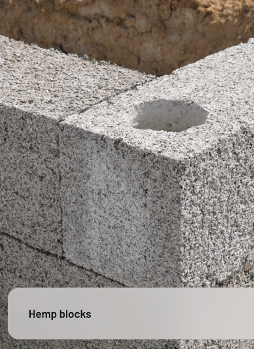Have you been hearing a lot more about embodied carbon lately and been wondering why it’s becoming so relevant? Around 40% of global carbon emissions are associated with built environment. In building science, we generally think of carbon in two different ways. Operational carbon refers to the greenhouse gas emissions released due to building energy consumption. This is the type of carbon emissions we are more accustomed to thinking about, regarding things like HVAC equipment efficiency and refrigerant types. Embodied carbon (EC) refers to the greenhouse gas emissions arising from the manufacturing, transportation, installation, maintenance, and disposal of building materials, as you can see in the image below. These carbon metrics are measured as Global Warming Potential (GWP) in kgCO2e, a proxy to compare material impacts.
Source: New Buildings Institute
As a whole, we’ve been addressing the lower hanging fruit in understanding the scale of the issue, recognizing hotspots where bigger impacts can be made through easier, more attainable actions. Simultaneously, many organizations have been developing standards and tools for reporting embodied carbon. Now in California, we’re moving towards building LCA (life cycle analysis) code required thresholds and mandatory reporting. Starting July 1, 2024, CALGreen Code for nonresidential projects will require certain projects to comply with an embodied carbon mandatory measure. Look for more detailed information in future blogs.
Where can we look within the buildings we design to find practical ways to reduce embodied carbon? According to Rocky Mountain Institute, around 50-80% of embodied emissions occur in the Product Stage (A1-A3) through raw materials supply, transport, and manufacturing. Certain products have a much higher impact than others, and targeting those specific materials for low-carbon product substitutions can be an efficient strategy for embodied emissions reduction.
Concrete
Source: Ross NW Watergarden, Shoi Sugi Ban: Setting Fire to Portland’s Fences
Concrete is probably the one you’re hearing about the most. With the highest potential for embodied carbon reduction at no to low additional cost, substituting cement with alternative cementitious materials (ACMs) and specifying recycled aggregate are some of the most effective methods for reduction. Reducing the overall amount of concrete in your project is also an effective measure as is thinking a bit outside the box for alternative strategies, like using charred wood instead of concrete for walls in landscaping. Please see our article from last year looking a little deeper into concrete.
Steel
There are many options for rebar and structural steel comprised of higher recycled content. Also consider using wood framing instead of metal framing for both energy efficiency and embodied carbon reasons. Additionally, sourcing sustainable and regenerative materials, like mass timber, instead of steel, and prioritizing local materials helps reduce emissions associated with transport.
Insulation
Source: Hempitecture.com
Insulation provides an interesting opportunity to reduce EC by using materials like mineral wool batt instead of foam insulation. Taking it a step further, there are also alternative carbon-storing insulation materials that sequester carbon like cellulose, hempcrete, and straw bale that will have a net EC reduction. Keep an eye out for emerging technologies, like Mycelium board, for other low-carbon options as they come onto the market.
Mycelium board: Greensulate
Glazing
Glazing options come at a bit higher of a cost premium compared to other targeted areas, but using lower-carbon window frame materials and specifying no more than two panes of glass can be effective carbon reduction strategies. It’s important to consider the tradeoffs between embodied carbon and operational carbon when thinking about how many panes to use. Additional panes of glass will give better window performance and reduce operational carbon emissions, but it will also have more embodied carbon associated as more materials are used.
Finishes
Finish materials are another lower cost category that can have an EC reduction by selecting low-carbon or more durable finish materials. Durable materials that don’t need to be replaced as frequently avoid emissions associated with manufacturing and transportation of new materials.
In addition to targeting specific products, there are some general design strategies that are important to consider in your building design. There’s a well-known quote in the building science world from Carl Elefante that says, “The greenest building is… one that is already built.” Reusing a whole or part of a building, and using salvaged materials reduces emissions associated with new production. When reuse is not an option, it is important to design buildings to use space and materials efficiency, avoiding excess consumption. This can be through designing buildings to be the right-size and avoid unused areas as well as highlighting exposed structure instead of applying additional finishes. We also want to think about the versatility of a building’s design and how a building can be utilized in the future, creating opportunities for reuse or recycling.
The terrain of embodied carbon is changing rapidly as new products become available and mandatory embodied carbon tracking becomes part of our codes. Start getting familiar with embodied carbon now so you can incorporate strategies to address it in your projects.





